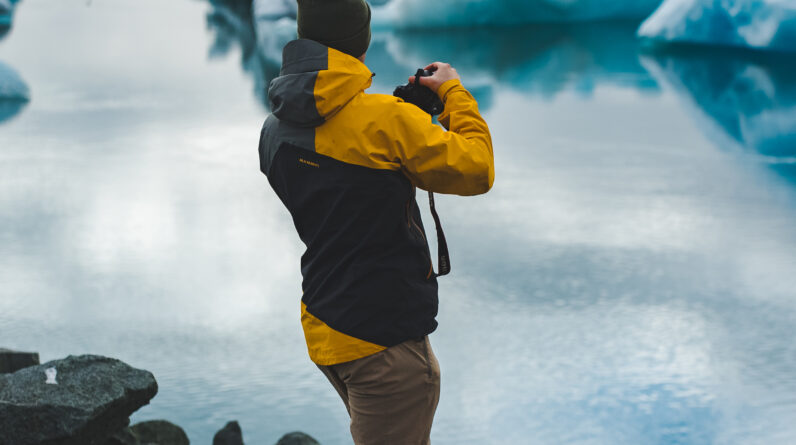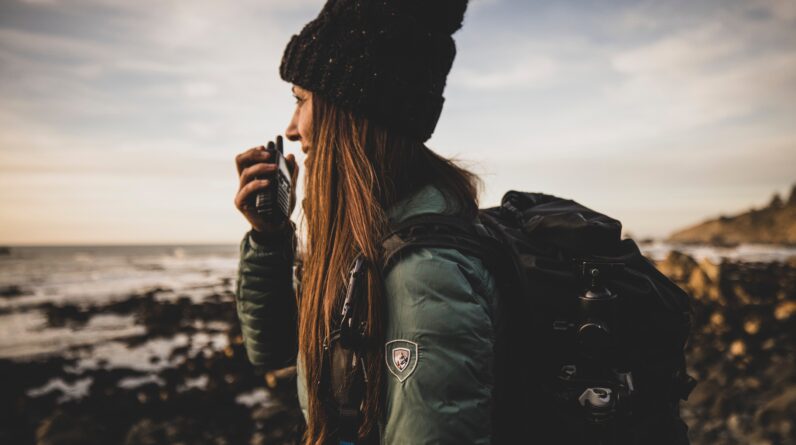
Are you passionate about paddling? Whether you enjoy canoeing, kayaking, or rafting, it is important to be aware of the potential risks involved. In this article, we will explore the leading causes of death for paddlers in small craft. Understanding these dangers can help us make informed decisions and take necessary precautions to ensure our safety while enjoying the exhilarating waters. So, let’s dive in and shed light on these crucial factors that can make all the difference between a thrilling adventure and a tragic incident.
Introduction
When it comes to engaging in water activities such as canoeing, kayaking, and rafting, it’s important to be aware of the potential risks involved. While these activities can be incredibly fun and enjoyable, it’s crucial to prioritize safety to prevent accidents and injuries. In this comprehensive article, we will explore the leading causes of death for paddlers in small crafts and provide valuable information on how to prevent them. By understanding these risks and implementing appropriate safety measures, you can ensure a safe and enjoyable experience on the water.
1. Drowning
Types of Drowning Incidents
Drowning, unfortunately, remains one of the leading causes of death for paddlers. There are two main types of drowning incidents that can occur in small crafts: wet-drowning and dry-drowning. Wet-drowning occurs when a person is submerged in water and cannot breathe due to water entering their lungs. Dry-drowning, on the other hand, happens when water enters the airway and vocal cords, causing spasms and suffocation.
Factors Contributing to Drowning
Several factors can contribute to drowning incidents while paddling. Inadequate swimming skills, lack of a personal flotation device (PFD), and turbulent water conditions can significantly increase the risk of drowning. Additionally, unexpected accidents such as capsizing, entrapment, or collisions can also lead to drowning.
Prevention Measures
To prevent drowning, it is crucial to prioritize water safety. Firstly, ensure that you and everyone in your group have strong swimming skills and are comfortable in the water. Always wear a properly fitted PFD while on the water, as it can be a lifesaver in case of an accident. Be mindful of water conditions and weather forecasts, avoiding paddling in rough or dangerous waters. It’s also essential to practice self-rescue techniques and understand how to assist others in case of an emergency.

2. Hypothermia
Causes of Hypothermia
Hypothermia is another significant risk for paddlers, particularly in colder climates or during winter months. It occurs when the body loses heat faster than it can generate it, leading to a dangerously low body temperature. Immersion in cold water, prolonged exposure to cold air, and inadequate protective clothing are common causes of hypothermia while paddling.
Symptoms and Effects of Hypothermia
Recognizing the symptoms of hypothermia is crucial for prompt intervention. Early signs include shivering, numbness, fatigue, and confusion. As hypothermia progresses, more severe symptoms such as loss of coordination, pale skin, and slowed breathing may occur. If left untreated, hypothermia can be life-threatening, leading to unconsciousness and cardiac arrest.
Prevention and Treatment
To prevent hypothermia, it’s important to dress appropriately for the conditions. Wear multiple layers of clothing, including a moisture-wicking base layer, insulating mid-layer, and waterproof outer layer. Always be prepared with extra clothing and blankets in case of unexpected cooling. If someone is showing signs of hypothermia, quickly move them to a warm and dry location, remove wet clothing, and provide external heat sources such as warm blankets or heating pads. Seek professional medical help as soon as possible.
3. Trauma
Types of Traumatic Injuries
Traumatic injuries, such as fractures, sprains, and head injuries, can occur during paddling accidents. Capsizing, collisions with other watercraft or objects, and falls can result in significant trauma. The impact of these injuries is magnified when they happen in remote areas or far from immediate medical assistance.
Common Causes of Trauma
Several factors can contribute to traumatic injuries while paddling. Lack of proper training, reckless behavior, and failure to follow safety guidelines significantly increase the risk of accidents. Environmental factors such as strong currents, submerged rocks, and low-hanging branches also pose a threat.
Safety Measures to Prevent Trauma
To prevent traumatic injuries, it is crucial to prioritize safety at all times. Obtain proper training and certification before engaging in paddling activities, especially in more challenging environments. Always wear protective gear such as helmets and knee pads, particularly when navigating rocky rivers or engaging in whitewater paddling. Be aware of your surroundings and make sure to communicate with your fellow paddlers to avoid collisions and accidents.

4. Cardiac Arrest and Heart-Related Issues
Understanding Cardiac Arrest
While relatively rare, cardiac arrest can occur during paddling activities and may lead to sudden death if not promptly treated. Cardiac arrest happens when the heart’s electrical system malfunctions, causing an irregular heartbeat or stopping it altogether. Paddlers with pre-existing heart conditions are particularly at risk.
Pre-existing Heart Conditions
Individuals with pre-existing heart conditions, such as coronary artery disease or arrhythmias, are more susceptible to cardiac arrest during paddling. The physical exertion, changes in temperature, and stress of water activities can exacerbate these conditions and trigger a cardiac event.
Risk Factors and Prevention
To mitigate the risk of cardiac arrest while paddling, it is crucial to prioritize heart health. Consult with a healthcare professional if you have any existing heart conditions or concerns. Maintain a healthy lifestyle, including regular exercise, a balanced diet, and stress management techniques. Be mindful of your physical limitations and pace yourself during paddling activities. Always carry a cell phone or other means of communication to call for help in case of an emergency.
5. Boating Accidents and Collisions
Common Causes of Boating Accidents
Boating accidents, including collisions, are a significant risk for paddlers. Operating a small craft requires attentiveness and adherence to safety guidelines. Common causes of boating accidents include operator inattentiveness, excessive speed, alcohol or substance impairment, and navigation errors.
Effects of Collisions
Collisions can have severe consequences for paddlers. Impact with other watercraft, fixed objects, or submerged hazards can result in injuries such as broken bones, concussions, or even death. Paddlers involved in collisions may also be at risk of falling overboard or getting trapped under the watercraft.
Safety Regulations and Precautions
To minimize the risk of boating accidents and collisions, it’s important to follow safety regulations and take necessary precautions. Familiarize yourself with local boating laws and regulations, including speed limits, right-of-way rules, and alcohol consumption restrictions. Avoid alcohol and substance use while operating a small craft and always maintain a high level of attention and situational awareness while on the water. Additionally, use lights and reflectors when paddling at dawn, dusk, or during low visibility conditions to enhance your visibility to other watercraft.

6. Strainers and Entrapments
What Are Strainers and Entrapments?
Strainers and entrapments are hazards that pose a significant risk to paddlers. Strainers are objects, such as fallen trees or debris, that allow water to pass through but can trap and hold a person or craft. Entrapments occur when a paddler becomes trapped or wedged in a confined space, such as rocks or crevices, while submerged in water.
Hazards Associated with Them
Strainers and entrapments can be extremely dangerous, as they restrict mobility and make it difficult to escape the water. Paddlers caught in these hazards may be at risk of drowning or sustaining severe injuries due to the force of the water pushing against them.
Avoidance and Survival Techniques
To avoid strainers and entrapments, it’s essential to maintain a high level of awareness while paddling. Scout the waterway ahead for potential hazards, including fallen trees or narrow channels. If you encounter a strainer or entrapment, avoid it by paddling around if possible. Should you become trapped, focus on self-rescue techniques, such as using your paddle to push yourself away from the hazard or pulling yourself up onto the object. Keeping calm and conserving energy is vital while waiting for rescue or attempting to free yourself.
7. Adverse Weather Conditions
Understanding How Weather Affects Paddlers
Adverse weather conditions can pose a significant risk to paddlers, making it essential to understand their potential impact. Factors such as wind, rain, lightning, and rapid changes in temperature can increase the risk of accidents and injuries while on the water.
Risks Associated with Different Weather Conditions
Different weather conditions present unique risks to paddlers. High winds can create rough waters and make it challenging to navigate or maintain control over your craft. Thunderstorms with lightning pose a danger of electrocution, especially when on open water. Cold temperatures, combined with rain or snow, increase the likelihood of hypothermia if appropriate protective measures are not in place.
Safety Guidelines for Paddling in Different Weather
To ensure your safety while paddling in various weather conditions, it’s essential to follow safety guidelines. Monitor weather forecasts and be prepared to adjust your plans accordingly. Avoid paddling in severe weather conditions, including thunderstorms or high winds. If you find yourself on the water when adverse weather approaches, seek shelter on land as soon as possible. Always carry appropriate protective gear, including rain jackets, extra layers, and waterproof bags for your valuables.
8. Inadequate Gear and Equipment
Importance of Proper Gear and Equipment
Using proper gear and equipment is crucial to ensure your safety while paddling. Inadequate or malfunctioning gear can significantly increase the risk of accidents and injuries. Reliable gear not only enhances your comfort but also improves your ability to respond effectively in emergency situations.
Common Gear-Related Issues
Several gear-related issues can compromise your safety while paddling. These include using an improperly fitted personal flotation device (PFD), using inadequate or worn-out protective clothing, and relying on unreliable navigation tools. Additionally, not having a means of communication, such as a cell phone or whistle, can hinder your ability to call for help in case of an emergency.
Maintenance and Inspection Guidelines
To maintain the integrity of your gear and equipment, it’s important to follow maintenance and inspection guidelines. Regularly check your PFD for any signs of wear or damage and ensure it fits snugly. Inspect your protective clothing for tears or leaks, and replace any worn-out items. Verify the functionality of your navigation tools, such as compasses or GPS devices, before each trip. Finally, ensure your communication devices are fully charged and protected from water damage.
10. Alcohol and Substance Abuse
Impact of Alcohol and Substance Abuse
One of the most overlooked risks while paddling is the consumption of alcohol or substances. Alcohol and substance abuse can impair judgment, coordination, and reaction time, significantly increasing the likelihood of accidents and injuries on the water.
Boating Under the Influence (BUI)
Boating under the influence (BUI) is both illegal and dangerous. Just like operating a motor vehicle, operating a small craft while intoxicated poses serious risks. Impaired paddlers may have reduced situational awareness, poor decision-making abilities, and compromised motor skills, making them more prone to accidents.
Prevention Measures and Awareness
To prevent alcohol and substance-related incidents while paddling, it’s crucial to prioritize safety and make responsible choices. Avoid consuming alcohol or substances before or while operating a small craft. Designate a sober paddler to ensure the safety of everyone in your group. Additionally, educate yourself and others on the risks and legal consequences associated with BUI to raise awareness and promote safer practices on the water.
While engaging in paddling activities is a fantastic way to enjoy the outdoors and connect with nature, it’s essential to prioritize safety at all times. By understanding the leading causes of death for paddlers in small crafts and implementing appropriate prevention measures, you can ensure a safe and enjoyable experience on the water. Remember to always be prepared, follow safety guidelines, and never underestimate the potential risks associated with water activities. Happy paddling!









